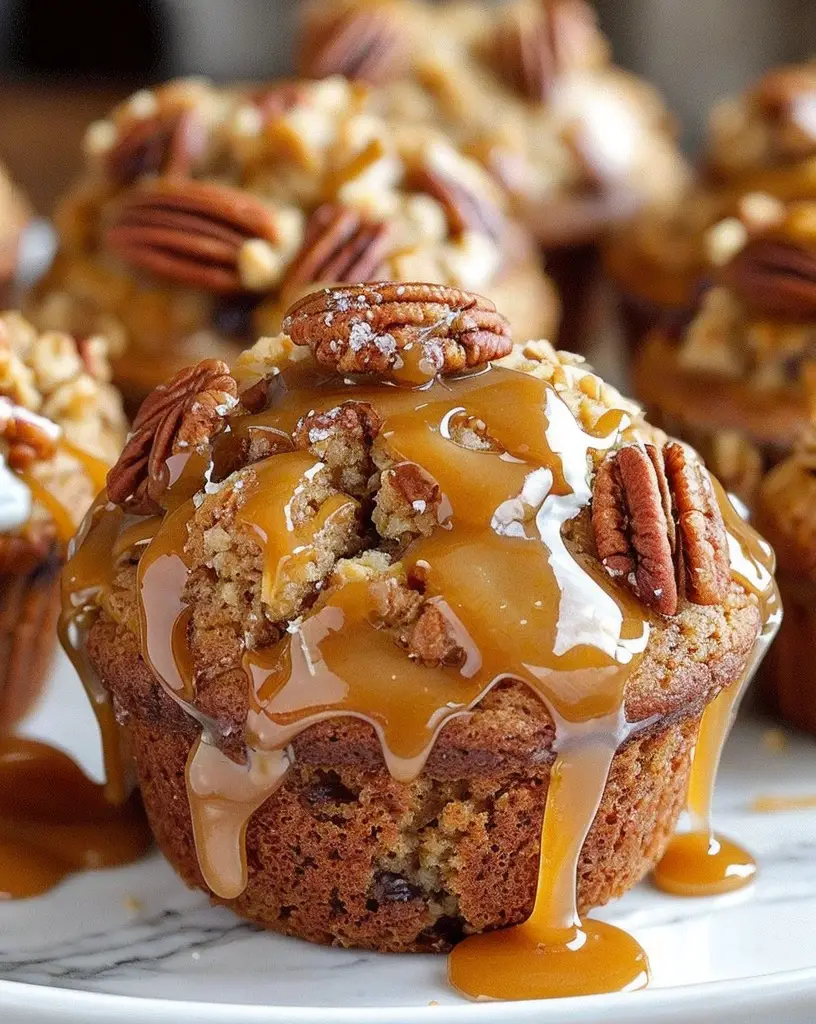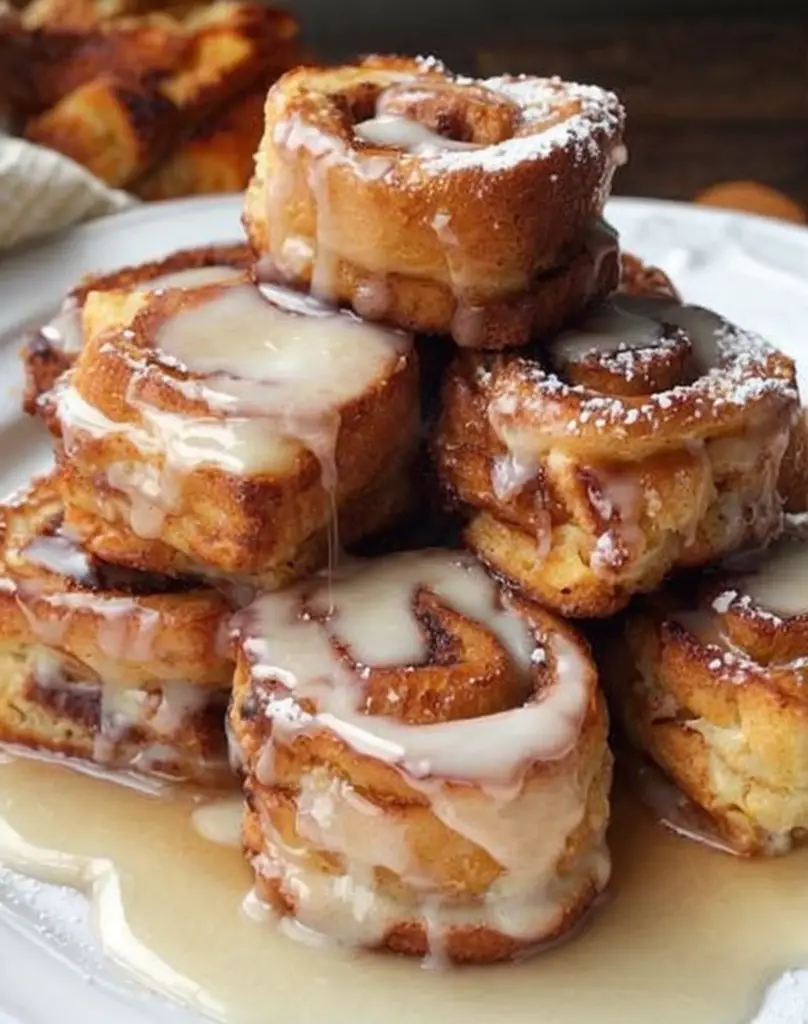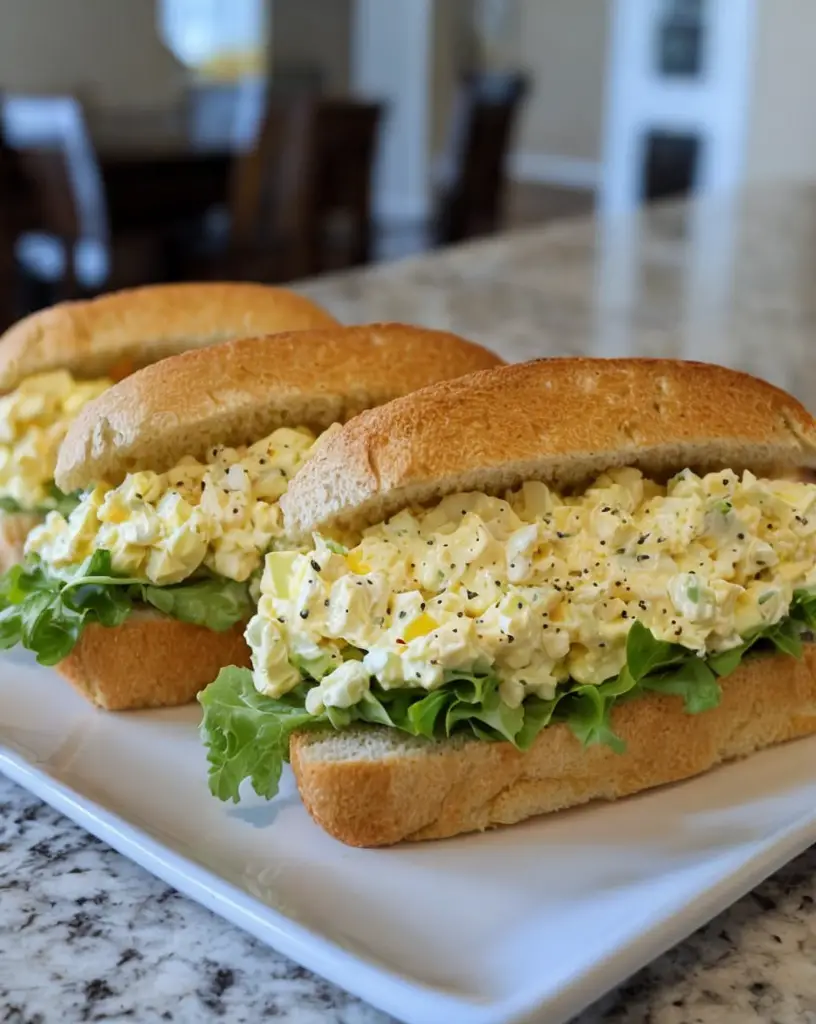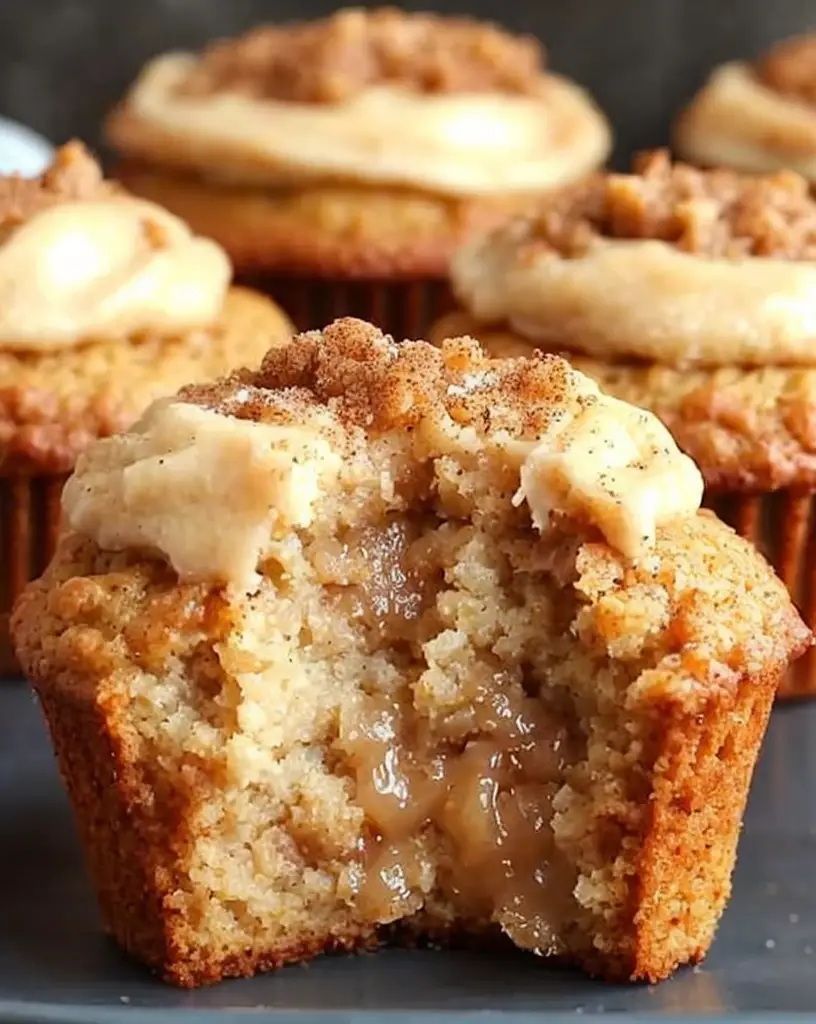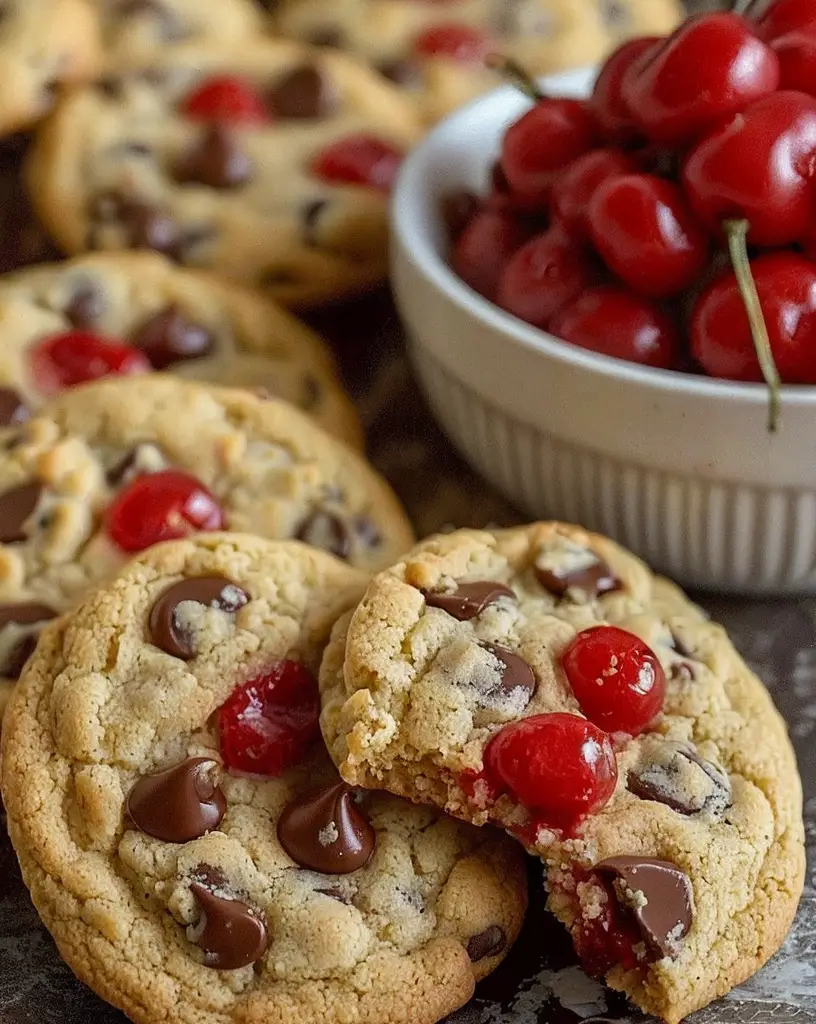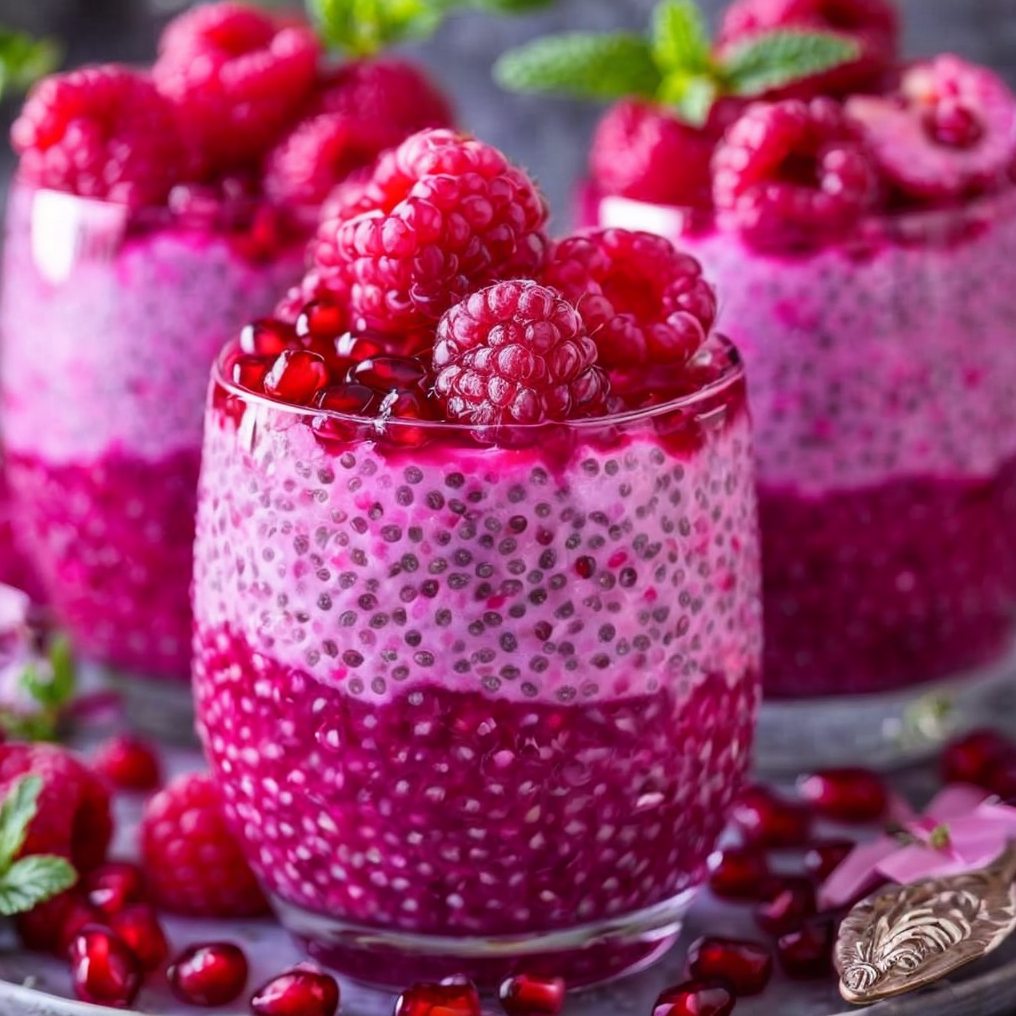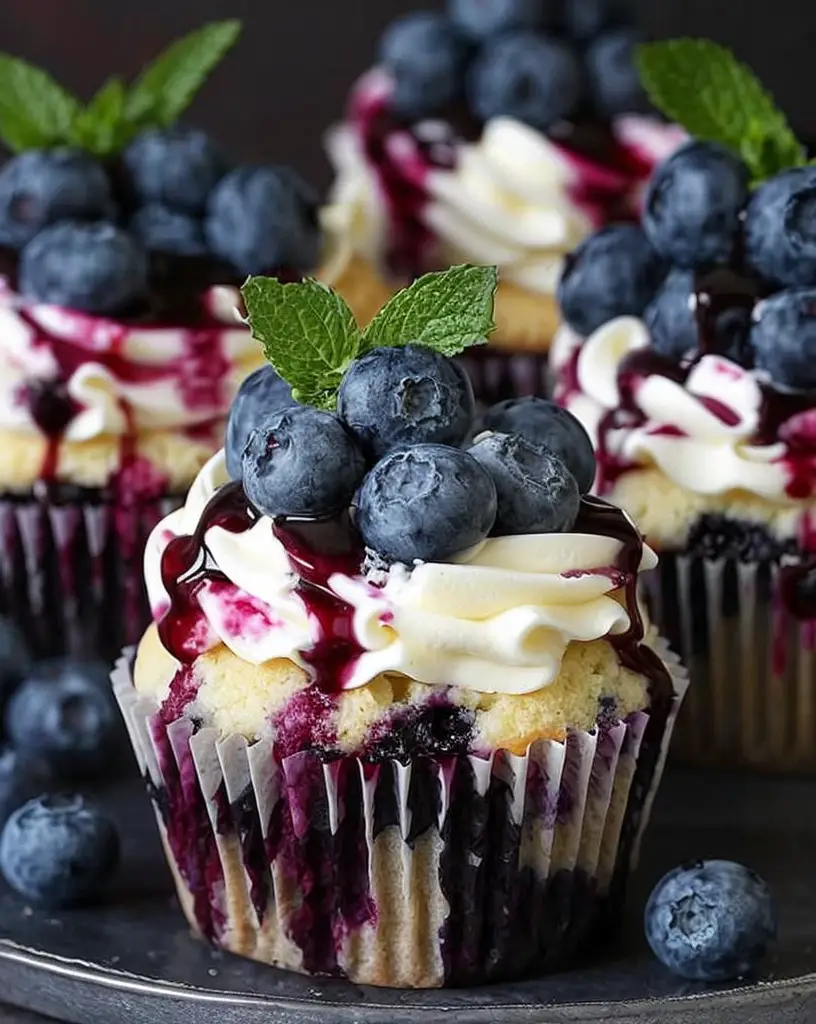Salted Caramel Pecan Muffins: A Sweet and Savory Delight
Get ready to indulge in the heavenly taste of Salted Caramel Pecan Muffins. Imagine a warm, fluffy muffin infused with the rich, buttery flavor of caramel and the delightful crunch of toasted pecans. These muffins strike the perfect balance between sweet and savory, making them a favorite for any occasion. Whether you’re serving them as a breakfast treat or as a decadent dessert, these muffins are sure to leave everyone wanting more.
The beauty of Salted Caramel Pecan Muffins lies in their simplicity yet profound flavor profile. The combination of caramel’s velvety sweetness with a touch of sea salt creates a mouth-watering sensation that’s hard to resist. The pecans add an earthy note, enhancing the overall depth of flavor. Each bite delivers a delightful contrast of textures – fluffy, moist muffin enriched with crunchy pecans. This harmonious blend will delight your taste buds and make your kitchen smell like a bakery.
Quick Recipe Highlights
- Flavor Profile: These muffins combine sweet caramel with a hint of salt and a nutty pecan finish, creating a complex and satisfying taste experience.
- Texture: The muffins are soft and tender, complemented by the crunchy texture of the pecans, offering a pleasing mouthfeel.
- Aroma: Experience the enticing aroma of freshly baked caramel and roasted pecans filling your kitchen.
- Visual Appeal: Caramel drizzles and pecan pieces offer a rustic yet inviting look, making each muffin a visual treat.
- Skill Level Needed: Moderate baking skills are required to caramelize sugar and evenly bake the muffins without overcooking.
- Special Equipment: Use a muffin tin, an electric mixer, and a caramel saucepan to achieve the best results.
Recipe Overview
- Difficulty Level: This recipe is moderately difficult, involving caramel creation and precise baking times to ensure perfect muffins.
- Category: Ideal for breakfast or brunch menus, but equally delightful as a sweet snack or dessert.
- Cuisine: Inspired by Southern baking traditions, these muffins incorporate classic American flavors.
- Cost: The primary ingredients are affordable, though pecans can be slightly pricier depending on seasonality.
- Season: While enjoyable year-round, these muffins are particularly comforting in the fall due to their warm, nutty flavors.
- Occasion: Perfect for holiday gatherings, family breakfasts, or treat-yourself weekends.
Why You’ll Love This Recipe
The Salted Caramel Pecan Muffins are a treat for the senses. The combination of sweet caramel with nutty pecans and a hint of salt delivers a depth of flavor that is both comforting and exciting. The muffins’ texture is a delightful contrast between moist cake and crunchy nuts, making each bite a unique experience.
Besides their tempting taste, these muffins are convenient to prepare. The recipe won’t keep you in the kitchen for too long, and it’s simple enough for those who don’t bake often. With just a few common ingredients and a couple of special touches, you’ll create a bakery-worthy treat in your own home.
From a nutritional standpoint, pecans provide healthy fats and essential minerals, while the homemade caramel allows you to control sugar content, making these muffins a relatively moderate indulgence. Enjoy them with a coffee for a satisfying breakfast or an afternoon pick-me-up.
Socially, serving these muffins automatically makes any occasion feel special. Whether it’s a holiday brunch with family or a picnic with friends, they are a versatile treat that fits any setting. They are also great for gifting, wrapped up beautifully for a homemade present.
Despite their luxurious taste, these muffins are an affordable treat. Most of the ingredients may already be in your pantry, and the recipe yields a dozen muffins, offering excellent value for a gourmet snack.
Historical Background and Cultural Significance
The Salted Caramel Pecan Muffins draw inspiration from Southern culinary traditions, where pecans and caramel feature prominently in many beloved dishes. Pecans, native to North America, have been a staple in Southern desserts for centuries, often showcased in pies and pralines.
Culturally, these muffins bring together the comforting elements of home baking with the sophistication of caramel’s gourmet appeal. Originating as a way to use local ingredients, the recipe has evolved to incorporate modern techniques and variations, showcasing the versatility of classic flavors in contemporary baking.
The combination of caramel and sea salt has taken the culinary world by storm in recent years, building on traditional flavors to create a sensation of rich sweetness meeting crispy saltiness. This has led to an evolution in how these ingredients are used, transitioning from fine dining restaurants to everyday home baking.
Regional variations of this recipe might include additions like cinnamon for warmth or chocolate chips for an extra touch of indulgence. Each baker can personalize the muffins to suit their taste or reflect their regional preferences, making the recipe a canvas for creativity.
Ingredient Deep Dive
Flour: Adding to the structure of the muffins, all-purpose flour is a staple in baking due to its balanced protein content, contributing to both texture and height. Store in an airtight container to maintain freshness.
Pecans: Pecans bring not only a nutty flavor but also health benefits, such as heart-healthy fats and antioxidants. Look for plump, uniformly colored pecans for the best taste and store them in a cool, dry place to prevent them from turning rancid.
Caramel: Homemade caramel provides a richness that ties the flavors together. To achieve perfect caramel, heat sugar gently and stir continuously to prevent burning. Adjust sweetness by altering the sugar content according to preference.
Common Mistakes to Avoid
- Overcooking the caramel can lead to a bitter taste. Watch the caramel closely and remove from heat as soon as it turns amber.
- Using cold ingredients directly from the refrigerator may prevent the batter from developing the correct texture. Bring all ingredients to room temperature.
- Overmixing the batter can result in tough muffins. Mix just until the dry ingredients are incorporated.
- Neglecting to toast the pecans beforehand can minimize their flavor. Lightly roast them to enhance their natural oils and taste.
- Filling the muffin tins too high risks overflow and uneven baking. Fill each cup about two-thirds full for best results.
- Skipping the cooling step will affect the caramel’s setting, resulting in a runny top. Allow muffins to cool fully before serving.
- Forgetting to line or grease the muffin tin can lead to sticking. Use paper liners or generously grease each cup.
- Using aluminum pans may cause uneven heating. Opt for silicone or high-quality metal pans for consistent results.
- Ignoring precise measurements may lead to an imbalance in flavors. Use measuring cups and spoons for accuracy.
- Not checking oven calibration can result in over-baking. Use an oven thermometer for an accurate temperature reading.
Essential Techniques
Caramelizing sugar is the cornerstone of this recipe, essential for achieving that distinct sweet and slightly bitter flavor profile. To master this technique, use a heavy-bottomed pan to distribute heat evenly and stir continuously. Visual cues like color change from white to amber indicate readiness. Avoid stirring too quickly, which can incorporate unwanted air bubbles and result in crystallization.
Pro Tips for Perfect Salted Caramel Pecan Muffins
Use high-quality sea salt for the salted caramel to enhance the overall flavor without overpowering the sweetness. Opt for finely ground salt for an even distribution.
Roast your pecans before incorporating them into the batter to bring out their full nutty flavor. Layer them on a baking sheet and toast for a few minutes until fragrant.
If you like a little extra richness, add a touch of vanilla extract to the batter alongside the eggs. This deepens the muffins’ flavor profile even further.
To create an upscale presentation, drizzle additional caramel sauce over the muffins before serving. This gives them an irresistible glossy finish.
For an even bake, ensure all ingredients are at room temperature, promoting even heat distribution in the oven.
Experiment with adding a pinch of cinnamon or nutmeg to the batter for a warm, spiced variation that’s perfect for colder months.
Variations and Adaptations
To add a regional twist, vary the nuts based on local preferences or availability. Walnuts or almonds can be substituted for pecans for a different nutty note.
Incorporate dried fruits such as cranberries or raisins during fall for seasonally inspired sweetness. This adds a chewy texture alongside the crunch of pecans.
For a dietary adjustment, replace all-purpose flour with a gluten-free baking mix, adjusting liquid ratios as necessary to maintain the batter’s consistency.
Increase the sweetness or adjust the overall sugar content to fit personal preference, keeping in mind that altering the caramel might require practice for perfect consistency.
In terms of presentation, serve these muffins on a wooden platter for a rustic look or individually wrapped as gifts during the holiday season. A sprinkle of powdered sugar can also add an appealing touch.
Serving and Presentation Guide
Plate these muffins on a tiered stand for a sophisticated brunch presentation. This visual appeal works perfectly when serving at parties or gatherings, encouraging guests to indulge.
For garnishing, a light dusting of powdered sugar or a drizzle of additional caramel sauce can elevate the aesthetic, making them even more inviting.
Pair these muffins with coffee or a rich caramel latte for a harmonious blending of flavors, enhancing the caramel notes in both muffin and beverage.
Consider serving these muffins with fresh fruit for a balanced breakfast option, adding a touch of brightness alongside the rich, decadent muffin.
For controlled portions at events, pre-slice muffins into halves or quarters, allowing guests to sample alongside other treats without overindulging.
Wine and Beverage Pairing
A sweet, slightly chilled Moscato complements the saltiness and sweetness of the caramel, providing a refreshing contrast to the rich flavors of the muffins.
If you prefer non-alcoholic options, choose a creamy chai latte to mirror the spices and deepen the caramel’s richness with aromatic nuances from the tea.
For coffee lovers, a cappuccino or an espresso pairs beautifully with the muffins’ sweetness, offering a classic and comforting experience alongside your morning muffin.
Frequent enjoyment of these muffins with green tea brings out their sophisticated notes, introducing a subtle herbal layer to their flavor profile.
Servers should consider room temperature as a key factor—chilling wine or opting for warm beverages based on the season enhances the dining experience.
Storage and Shelf Life
To maintain the muffins’ freshness, store them in an airtight container at room temperature for up to three days. Keeping them sealed prevents moisture loss and staleness.
For longer storage, freeze muffins individually wrapped for up to three months. Thaw at room temperature for a quick and delicious treat whenever you crave one.
Monitor for signs of spoilage, such as mold or an off-smell, especially in humid climates where baked goods may spoil faster.
Reheat muffins in the oven at a low temperature for a fresh-baked feel, or enjoy them at room temperature for a quick snack.
Avoid refrigeration if possible, as it may dry out the muffins. Storing at room temperature or freezing preserves the texture best.
Make Ahead Strategies
Prepare the muffin batter a day in advance, storing it in the refrigerator overnight. This enhances the flavors as they meld before baking, offering intense taste.
Complete all caramel preparation the day before, ensuring it’s stored in a refrigerator-safe container to retain its texture and flavor until needed.
While advance preparation may slightly alter texture, enjoying them fresh ensures the optimal taste and feel. Consider adding fresh pecans or a caramel drizzle right before serving.
If reheating, gently warm muffins in an oven or toaster oven to bring back their delightful fresh-baked taste. This little step makes all the difference for meal presentations.
Emphasize fresh components like extra pecans or a final pinch of sea salt to reintroduce bright notes and delightful contrast with advanced preparation.
Scaling Instructions
When halving the recipe, maintain accurate and proportional ingredient division to uphold proper flavor balance. Use a smaller muffin tin to scale down output accordingly.
For doubling or tripling, increase ingredients proportionately but measure carefully to prevent overwhelming batter with excess mix. Opt for batch baking to ensure even baking and consistent texture.
Adjust mixing equipment if necessary, using a larger bowl or stand mixer for increased ingredients. This supports efficient mixing without compromising consistency.
Timing may vary, so always check for doneness with a toothpick inserted into the muffins, ensuring consistent results without undercooking or overbaking.
Consider additional storage solutions for larger batches, possibly using dedicated muffin carriers for transport if sharing treats with others.
Nutritional Deep Dive
These muffins offer a blend of macronutrients, including carbohydrates for energy, healthy fats from pecans, and slight protein content from eggs and nuts.
Pecans add significant micronutrients like magnesium and vitamin E, supporting overall health and providing antioxidant benefits contrasted with the sugars in caramel.
While indulgent, moderation is vital—enjoying these muffins as a part of a balanced diet minimizes any dietary concerns regarding sugar or fat intake.
Consideration for portion size helps manage weight, allowing enjoyment without affecting dietary goals. Incorporating mindful eating strategies complements this balanced approach.
Portion control advice includes savoring each bite to fully appreciate the taste and texture, helping prevent overindulgence and maintaining dietary commitments.
Dietary Adaptations
Gluten-Free: Substitute all-purpose flour with gluten-free baking flour, ensuring other ingredients are gluten-safe to maintain compliance with dietary needs.
Dairy-Free: Swap butter with plant-based alternatives and ensure caramel ingredients are free from dairy substances for a delicious, inclusive version of the muffins.
Vegan: Use flax eggs and non-dairy margarine for a compassionate twist on this recipe. Ensure caramel is vegan or make it using coconut cream for a luscious finish.
Low-Carb: Seek specialized low-carbohydrate flour and sugar alternatives to align with dietary restrictions, maintaining flavor without carbohydrates as a focus.
Keto: Focus on reducing sugar intake and increasing pecan content. Consider coconut flour for a keto-oriented adaptation that retains key nutritional qualities.
Paleo: Embrace natural sweetening options with honey or maple syrup, ensuring the balance of flavors while fitting within paleolithic dietary preferences.
Low-FODMAP: Minimize high-FODMAP ingredients, focusing on pecan portion control and suitable low-FODMAP alternatives to maintain gut health without sacrifice.
Troubleshooting Guide
Texture Issues: If muffins turn out dense, check if overmixing the batter or using cold ingredients occurred. Switch to room-temperature elements and gentle mixing.
Flavor Balance: Lessen sugar or salt based on taste feedback, adjusting quantities to perfect the balance of sweet and savory notes for varied preferences.
Temperature Problems: Constant temperature monitoring prevents baking discrepancies. Equip yourself with an oven thermometer for precision cooking.
Equipment Challenges: Mismatched baking equipment affects results. Consider investing in uniform muffin tins and reliable baking sheets for consistency across batches.
Ingredient Substitutions: Mix dry and wet ingredients separately to match replacement flour textures for seamless adaptation when alternative ingredients are used.
Timing Concerns: Finish baking by checking muffin doneness with proper timing, gaining insight into recipe modifications if timing differs based on home equipment.
Recipe Success Stories
Community Feedback: Many home bakers report satisfying results when adding personal touches, like extra caramel drizzle or a pecan praline topping, creating unique muffins.
Variation Successes: A successful adaptation involves adding apples for a fruity accent which complements the caramel, popular during autumn gatherings and holidays.
Adaptation Stories: Various bakers transformed the muffins into a cake form, employing same-ingredient ratios in a cake pan, offering impressive serving alternatives.
Reader Suggestions: Readers rave about incorporating chopped dark chocolate for further depth or golden raisins for sweet surprise bites within each muffin.
Photography Tips: Capturing muffin textures can highlight their appeal. Consider close-up shots with natural lighting and a contrasting backdrop for picturesque, inviting photos.
Frequently Asked Questions
A1: Yes, simply omit the pecans or replace them with a different ingredient, such as chocolate chips or dried fruits, for an alternative texture and flavor.
Q2: What’s the best way to store leftover muffins?
A2: Store muffins in an airtight container at room temperature for up to three days. For longer storage, freezing in an airtight container is recommended.
Q3: How can I ensure my caramel doesn’t burn?
A3: Monitor the caramel closely, using medium heat and constant stirring. When the sugar reaches amber color, promptly remove from heat to avoid burning.
Q4: Is it possible to make a sugar-free version?
A4: Experiment with sugar alternatives like stevia or erythritol in place of regular sugar. Be mindful of substitution ratios to maintain the expected sweetness.
Q5: Can these muffins be made in advance for a party?
A5: Yes, prepare them the night before, ensuring they’re stored in an airtight container. Refresh by lightly warming them before serving at your event.
Q6: Do I need to use fresh pecans?
A6: While fresh pecans offer optimum flavor, you can use packaged pecans as long as they are stored properly and maintain their nutty taste.
Q7: Can I use maple syrup instead of caramel?
A7: While maple syrup has a different flavor profile, it can be used as a substitute, providing a distinct sweetness. Adjust the quantity to avoid overly wet batter.
Q8: How do I prevent muffins from sticking to the pan?
A8: Use paper muffin liners or grease the muffin tin thoroughly before adding the batter. Silicone baking cups offer a non-stick alternative to traditional tins.
Q9: Why are my muffins sinking in the middle?
A9: This may be due to underbaking or overmixing. Ensure proper baking time and handle the batter gently to maintain structure.
Q10: Can these muffins be transformed into a loaf?
A10: Absolutely, extend baking time as needed and cover with foil midway through to prevent the top from over-browning while the center bakes.
Additional Resources
For those looking to explore complementing recipes, consider trying a pecan-infused bread or caramel sauce. These additions can enrich your baking repertoire and provide delectable pairings.
Technique guides are invaluable for further mastering caramelization or exploring creative baking techniques that enhance your muffin-making skills.
Ingredient information provides insights into substitutions and enhancements while elevating the familiar experience. Investigating pecans’ nutritional value can inspire dietary adjustments.
Explore equipment recommendations to tailor your kitchen setup, supporting consistent, professional results with each batch of muffins you bake.
Take advantage of seasonal variations, using fresh produce available in your area to adapt recipes while maintaining the integrity and expected taste of your baked goods.
Join the Conversation
Engage with fellow baking enthusiasts and share your experiences on social media platforms, using hashtags to connect with like-minded muffin lovers.
Consider photography tips for capturing your freshly baked muffins, enhancing their presentation through creative techniques and natural lighting.
Writing recipe reviews offers vital feedback to others in the community, assisting newcomers in expectations and variations they might try for themselves.
Community engagement fosters a collective creativity, encouraging recipe variations from shared experiences. Discover new ideas and inspiration with each interaction.
Welcome suggestions for adaptations, whether through comments or forums, enabling continual learning and innovation in the shared love of baking.
The Recipe
Salted Caramel Pecan Muffins
Serves: 12
Prep Time: 20 mins
Cook Time: 25 mins
Total Time: 45 mins
Kitchen Equipment Needed
- Muffin tin
- Electric mixer
- Caramel saucepan
- Baking sheet
- Cooling rack
Ingredients
- 1 cup all-purpose flour
- 1/2 cup granulated sugar
- 1/2 cup unsalted butter, softened
- 2 large eggs
- 1/2 cup milk
- 1 tsp vanilla extract
- 1/2 tsp baking powder
- 1/4 tsp baking soda
- 1/4 tsp salt
- 1 cup pecans, toasted and chopped
- 1/2 cup homemade caramel sauce, plus extra for drizzling
Directions
- Preheat your oven to 350°F (175°C) and line a muffin tin with paper liners.
- Using an electric mixer, beat butter and sugar until light and fluffy. Add eggs, one at a time, mixing well after each addition.
- Mix in vanilla extract. In a separate bowl, whisk flour, baking powder, baking soda, and salt.
- Gradually add dry ingredients to the wet mixture, alternating with milk, starting and ending with dry ingredients. Fold in pecans and caramel sauce.
- Divide batter evenly among muffin cups, filling about two-thirds full. Drizzle tops with additional caramel sauce if desired.
- Bake for approximately 20-25 minutes or until a toothpick inserted into the center of a muffin comes out clean.
- Allow muffins to cool in the pan for 5 minutes before transferring to a cooling rack.
Recipe Notes
- Ensure eggs and butter are at room temperature for smooth blending.
- For a deeper flavor, consider using dark caramel sauce.
- Experiment with different types of nuts for variation.
- Muffins are best served the day they are baked but can be stored for later enjoyment.
